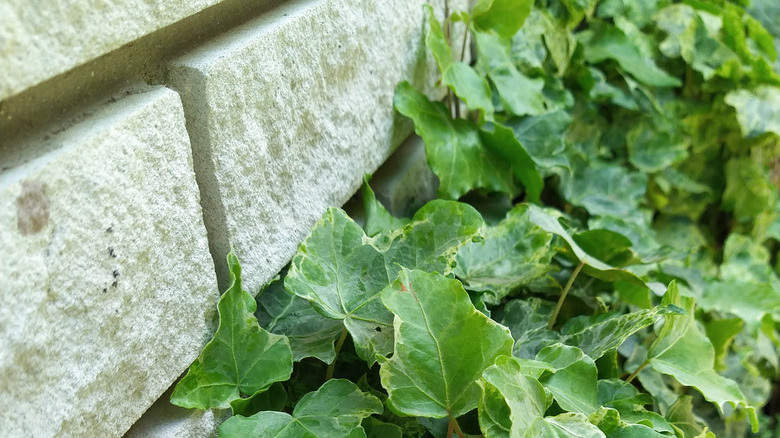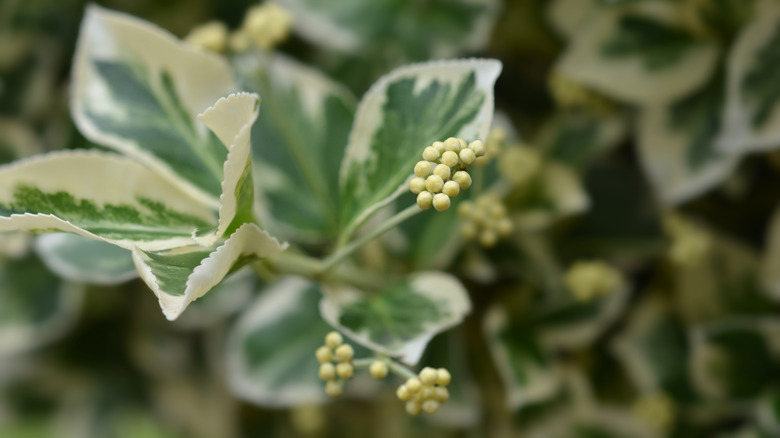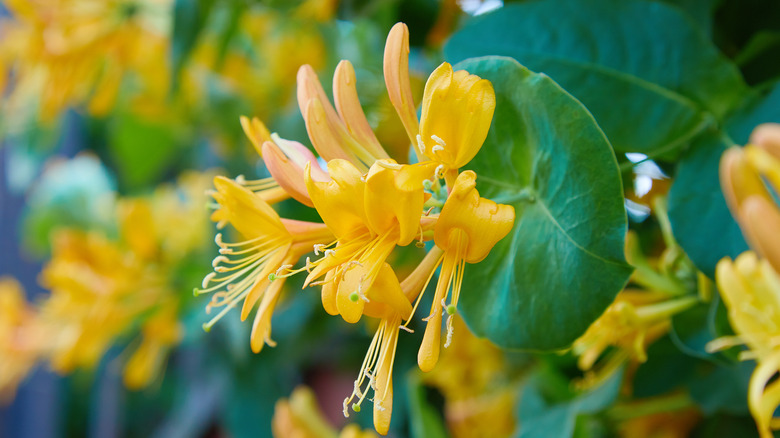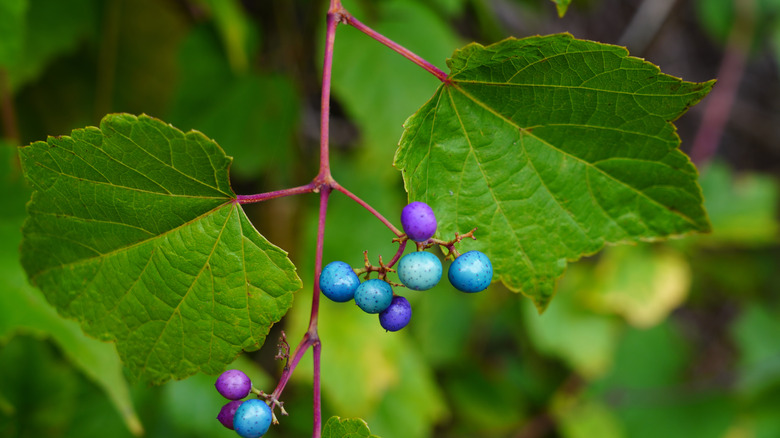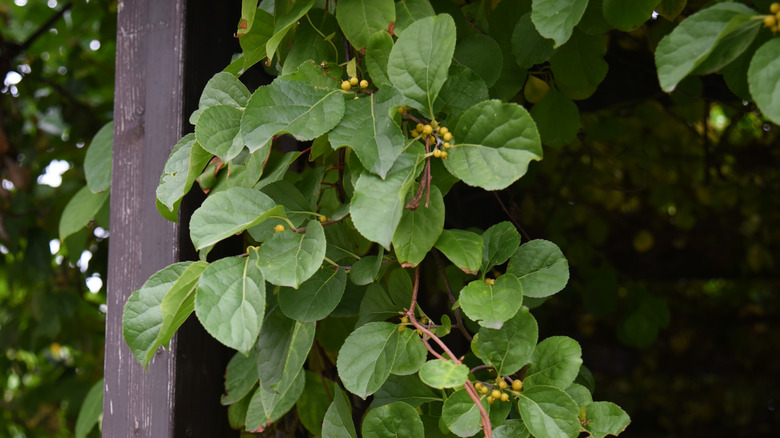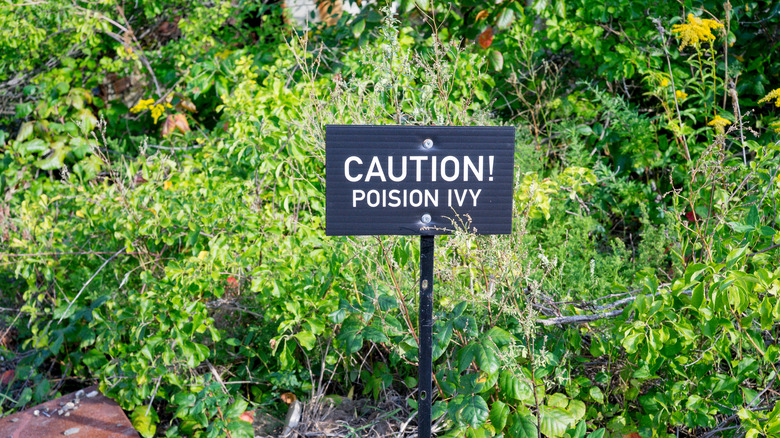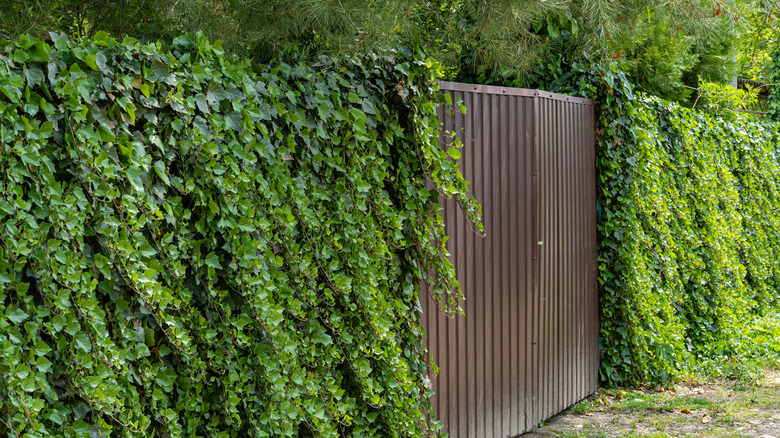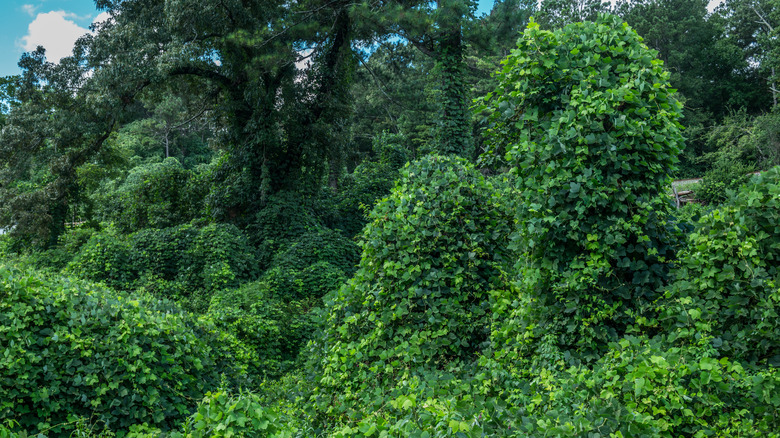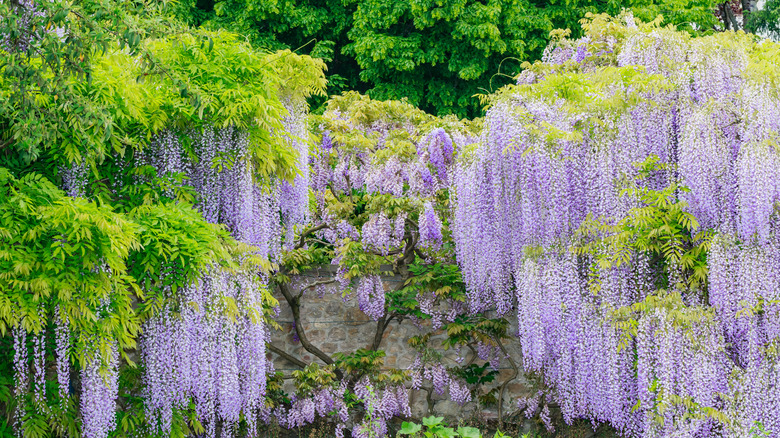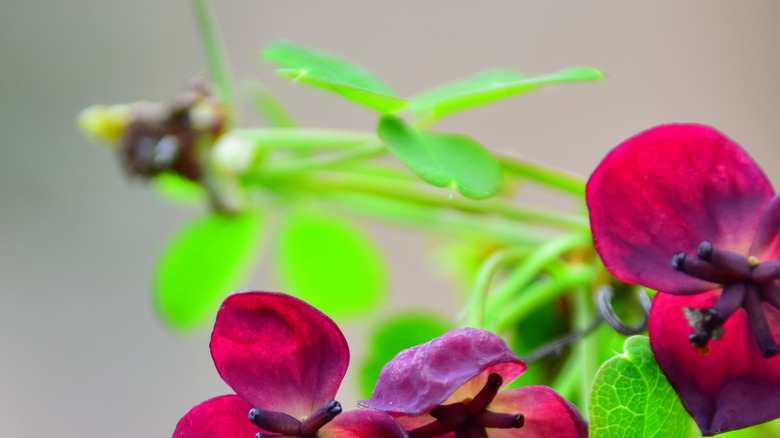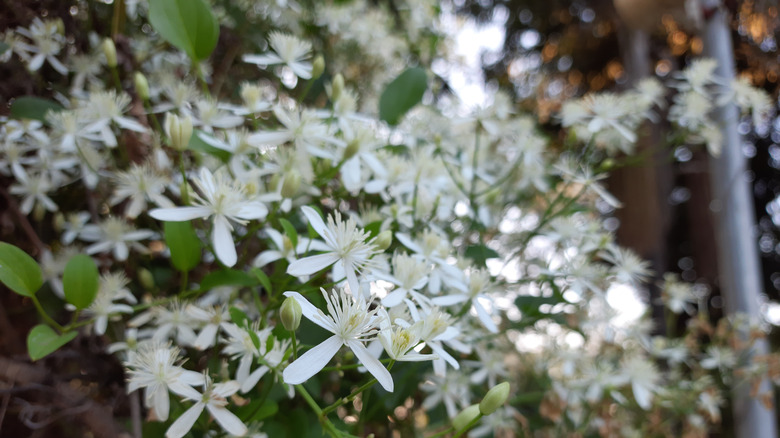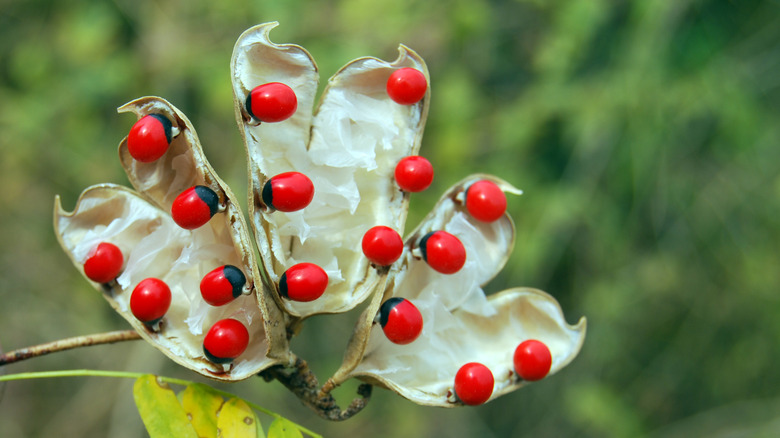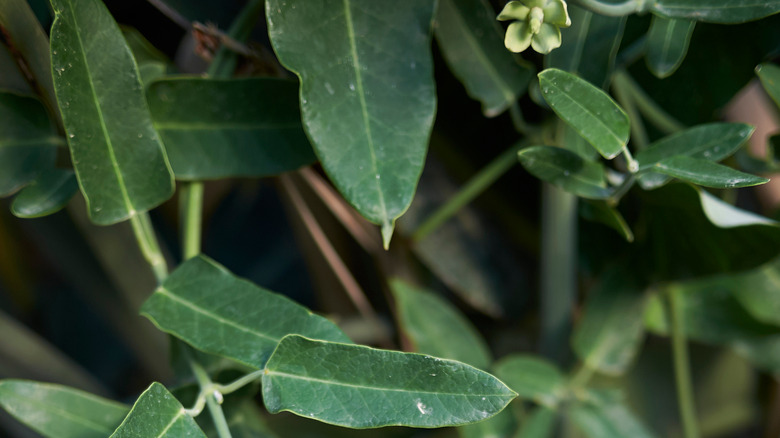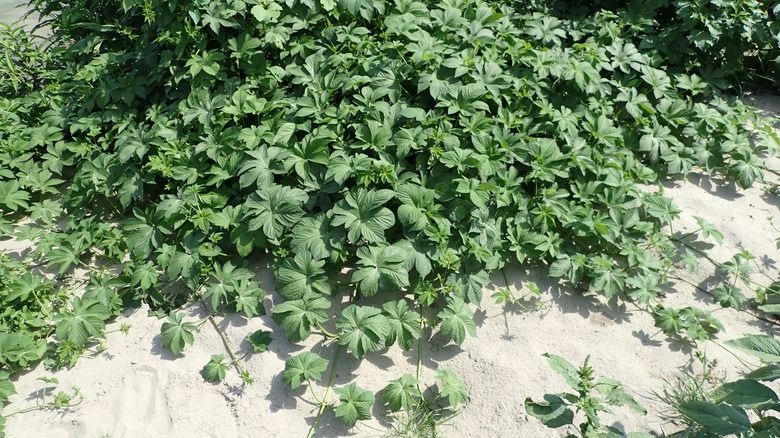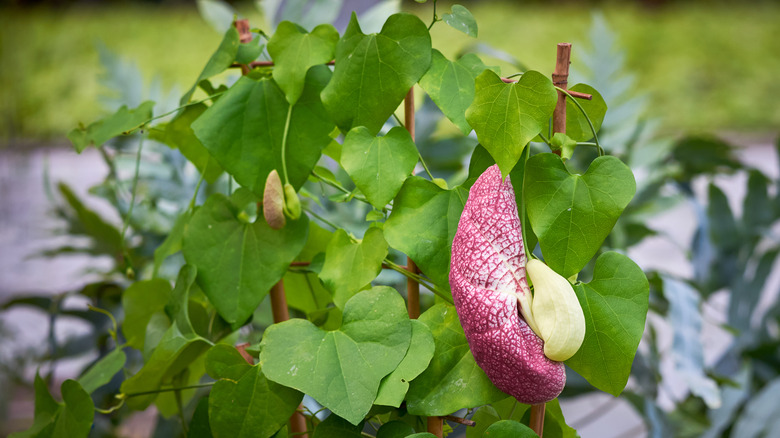15 Invasive Vines You Should Know About
The United States Department of Agriculture defines invasive vines as alien plants whose existence on non-native soil causes or is likely to cause ecological, environmental, or human health harm. In most cases, these plants were introduced for consumption, design, and erosion control. Some of them spread unintentionally through new regions as we travelled around the world, while others were brought to new environs by ships carrying aquatic organisms in their ballasts, and smaller boats, on their propellers.
Generally speaking, you can think of invasive vines as exotic plants gone wild or out of control. The following list of 15 invasive vines offers a peek into the world of aggressive plants that can take over your garden, yard, and sometimes even your neighborhood. Even though most of these invasive vines offer striking foliage and colorful blooms, you do not want them anywhere around your house, as they can overwhelm your landscape and displace native vegetation.
1. Algerian ivy
Algerian ivy (Hedera canariensis) is an evergreen vine native to the Canary Islands and northern Africa. Because it tolerates all soil types, it establishes rather quickly. If the conditions are right, along with lack of monitoring, expect this vine to attach itself to buildings and the trunks of trees. But in the hands of an adept gardener, Algerian ivy makes an excellent ground cover and houseplant, Gardening Know How states.
Bloom Season: spring
USDA Growing Zone: 7 to 11
Growing Conditions: partial or full shade
Soil Type: neutral, well-draining
Size: 20 to 40 feet long, 3 feet wide
2. Wintercreeper
Wintercreeper (Euonymus fortunei) is one of the invasive vines to look out for. The Asia native has an aggressive rootlet system that it uses to climb trunks and walls. As a juvenile plant, wintercreeper can reach 66 feet if it has support. But as a trimmed shrub, you can keep it under 3 feet. Control this plant by pruning regularly, especially after the blooming period, The Spruce advises.
Bloom Season: spring
USDA Growing Zone: 4 to 9
Growing Conditions: full sun or partial shade
Soil Type: well-draining, medium moisture
Size: up to 70 feet, 2 feet wide at maturity
3. Japanese honeysuckle
According to the Plant Conservation Alliance, Japanese honeysuckle (Lonicera japonica) is an ecological threat. It twines around the stems of herbaceous plants and shrubs, eventually forming large tangles to kill them. You can control a small spread by removing the vines by hand. But on a larger scale, you may have to mow frequently or use herbicides to prevent regrowth and control the infestation.
Bloom Season: late spring to fall
USDA Growing Zone: 4 to 9
Growing Conditions: full sun or partial shade
Soil Type: moist, well-draining
Size: 15 to 30 feet long, 3 to 6 feet wide
4. Porcelain berry
Do not get too excited when you see a dazzling display of blue and purple berries in your garden. It could be porcelain berry (Ampelopsis brevipedunculata), an aggressive weed introduced in the 1870s as an ornamental ground cover. It is one of the top invasive vines in the United States. North Carolina State University says it forms thick mats to cover, shade out, and choke other vegetation.
Bloom Season: summer to fall
USDA Growing Zone: 5 to 9
Growing Conditions: full sun or partial shade
Soil Type: moist, well-draining
Size: 10 to 20 feet long, 26 to 32 feet wide
5. Oriental bittersweet
There are three types of bittersweets, but the Oriental bittersweet (Celastrus orbiculatus) is the most aggressive. It is a deciduous vine that grows rapidly, smothering and girdling any woody plant it clings to. Oriental bittersweet can single-handedly tumble down whole canopies of forests due to its weight and growth habit, Michigan State University states. You are most likely to see oriental bittersweet along roadways in the fall.
Bloom Season: spring to summer
USDA Growing Zone: 5 to 8
Growing Conditions: full sun or partial shade
Soil Type: tolerates all types
Size: 90 feet long, similar spread
6. Poison ivy
Poison ivy (Toxicodendron radicans) is so toxic the adage, "leaves of three, let it be," was coined. As part of the invasive vine, it features three glossy leaves with jagged or smooth edges. Every part of poison ivy produces urushiol, an oily sap that causes allergic reactions and rashes. If you notice a rash, Healthline recommends oral antihistamine and hydrocortisone cream. But if your symptoms persist, see a doctor.
Bloom Season: spring
USDA Growing Zone: 3 to 10
Growing Conditions: full sun or partial shade
Soil Type: all types
Size: 60 to 150 feet tall (as a vine), 1 to 3 feet wide
7. English ivy
Ecosystem Gardening has placed English ivy (Hedera helix) on their "most hated plants" list. The European and Western Asia native is an excellent climber, using creeping runners to choke out everything in its path. As a homeowner, you do not want this evergreen flowering vine climbing up your walls. It can dig into the masonry, which could eventually bring down your house.
Bloom Season: fall
USDA Growing Zone: 4 to 9
Growing Conditions: partial shade or full shade
Soil Type: fertile, moist
Size: 50 feet long or more (as a vine), 15 feet wide (as a ground cover)
8. Kudzu
Kudzu (Pueraria montana) is one of the dangerous invasive vines that was brought to the U.S for ornamental purposes and erosion control in 1876. According to The Nature Conservancy, the twining perennial vine, native to Japan and China, grows nearly a foot daily. You can recognize Kudzu by its three alternating leaves of three oval-shaped leaflets and purple or red flowers.
Bloom Season: early summer to mid-fall
USDA Growing Zone: 5 to 10
Growing Conditions: full sun, prefers fields and forests
Soil Type: all types
Size: 30 feet to 100 feet long, 1.5 to 9 feet wide
9. Chinese wisteria
We can understand why you would want Chinese wisteria (Wisteria sinensis) in your garden. It is a gorgeous bloomer, producing large clusters of fragrant bluish-purple flowers. Unfortunately, it poses a threat to native habitats. Per The Plant Conservation Alliance, Chinese wisteria climbs up tree trunks and branches in a clockwise direction and twines tightly, cutting through the bark and causing death by girdling.
Bloom Season: spring through summer
USDA Growing Zone: 5 to 8
Growing Conditions: full sun or part shade
Soil Type: well-draining, medium moisture
Size: 10 to 25 feet long, 4 to 8 feet wide
10. Chocolate vine
Also known as five-Leaf Akebia, chocolate vine (Akebia quinata) is a vanilla-scented deciduous semi-evergreen vine, per Gardening Know How. Though it is a fruit tree that bears stunning lilac flowers that can elevate your garden, things can get out of control in no time. Chocolate vine is one of the most aggressive invasive vines that poses a threat to U.S ecosystems. It grows rapidly, outcompeting and replacing existing flora.
Bloom Season: spring
USDA Growing Zone: 4 to 8
Growing Conditions: full sun, can tolerate shade
Soil Type: well-draining, sandy or loam
Size: 15 to 40 feet long, up to 30 feet wide
11. Sweet autumn clematis
There is no doubt that sweet autumn clematis (Clematis terniflora) paints an idyllic picture whenever it climbs up arbors and trellises. But like every invasive vine, it will overwhelm your landscape due to its rampant growth habit. It can reach buildings and is known to smother native flora and pull down telephone wires, as stated by the Global Invasive Species Database.
Bloom Season: late summer to early fall
USDA Growing Zone: 5 to 9
Growing Conditions: full sun or partial shade
Soil Type: all types, well-draining
Size: 15 to 40 feet long, 3 to 5 feet wide
12. Rosary pea
Rosary pea (Abrus precatorius) is a broadleaf evergreen vine that bears delicate foliage, lavender blooms, and distinct pods and seeds. It was introduced to North America in the 1930s, similar to other invasive vines, but quickly became a nuisance. It is classified as a Category I invasive species, via the University of Florida, due to how it displaces native plant ecosystems. Seek medical care immediately after ingesting a rosary pea seed.
Bloom Season: summer
USDA Growing Zone: 9 to 11
Growing Conditions: full sun
Soil Type: sandy or loam, moist
Size: 10 to 20 feet, similar spread
13. Moth vine
Native to South America, moth vine (Araujia sericifera) is quite the villain. It invades natural areas to smother native vegetation with heavy, tangled canes. Moth vine is a flowering vine bearing broad heart-shaped leaves, large green fruits, and hairy twining stems, per Candide Gardening. Its seeds, leaves, and latex sap are poisonous, causing skin irritations and breathing difficulties that may require medical attention.
Bloom Season: late summer to early fall
USDA Growing Zone: 10 to 11
Growing Conditions: full sun or partial shade, average water needs
Soil Type: all types
Size: 20 to 30 feet long, similar spread
14. Japanese hops
Japanese hops (Humulus japonicus) were imported into the U.S. as an ornamental vine and Asian tonic. Garden Gate considers it a threat to native flora since it forms a dense mat over plants and blocks out the light. Eventually, it kills the vegetation underneath and takes over, as other invasive vines do. To control Japanese hops, you may have to hand-pull, mow frequently, or use systemic herbicide.
Bloom Season: summer
USDA Growing Zone: 4 to 8
Growing Conditions: full sun or partial shade
Soil Type: well-draining, sandy loam
Size: 10 to 35 feet long, unknown width
15. Elegant dutchman's pipe
Elegant dutchman's pipe (Aristolochia littoralis) is a striking vine that homeowners train up trellises near entry points to create a sunshade, CABI says. It features dense foliage and mahogany-cream colored blooms. Though Elegant dutchman's pipe serves a useful purpose, it can upset your garden. This is because it grows up to 6 feet a year and has a rapid pollination process.
Bloom Season: late spring and early summer
USDA Growing Zone: 4 to 8
Growing Conditions: full sun or partial shade
Soil Type: well-draining, moist
Size: 8 to 35 feet long, 15 to 20 feet wide

